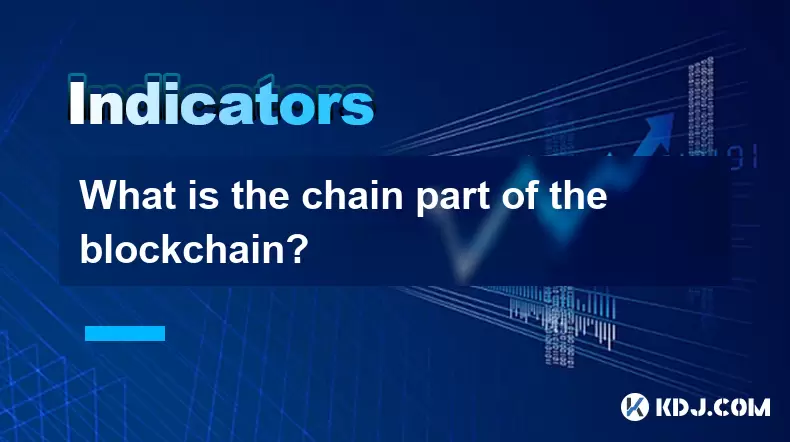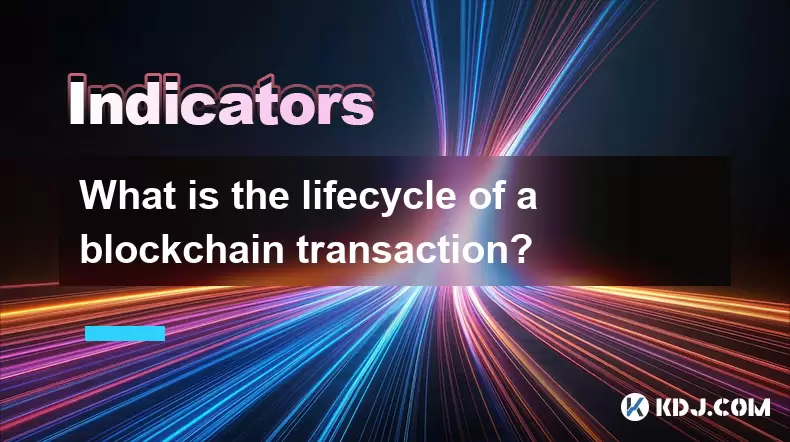-
 Bitcoin
Bitcoin $114400
1.32% -
 Ethereum
Ethereum $3499
2.20% -
 XRP
XRP $2.922
4.26% -
 Tether USDt
Tether USDt $0.0000
0.03% -
 BNB
BNB $752.6
1.53% -
 Solana
Solana $161.8
1.64% -
 USDC
USDC $0.9999
0.01% -
 TRON
TRON $0.3267
1.32% -
 Dogecoin
Dogecoin $0.1991
3.02% -
 Cardano
Cardano $0.7251
3.29% -
 Hyperliquid
Hyperliquid $38.32
3.36% -
 Stellar
Stellar $0.3972
7.58% -
 Sui
Sui $3.437
2.74% -
 Chainlink
Chainlink $16.29
3.65% -
 Bitcoin Cash
Bitcoin Cash $545.3
3.70% -
 Hedera
Hedera $0.2482
7.49% -
 Ethena USDe
Ethena USDe $1.001
0.03% -
 Avalanche
Avalanche $21.40
2.02% -
 Toncoin
Toncoin $3.579
1.56% -
 Litecoin
Litecoin $109.3
2.20% -
 UNUS SED LEO
UNUS SED LEO $8.951
-0.18% -
 Shiba Inu
Shiba Inu $0.00001220
2.75% -
 Polkadot
Polkadot $3.613
2.99% -
 Uniswap
Uniswap $9.173
3.78% -
 Monero
Monero $302.6
2.62% -
 Dai
Dai $0.0000
0.00% -
 Bitget Token
Bitget Token $4.320
1.52% -
 Pepe
Pepe $0.00001048
3.40% -
 Cronos
Cronos $0.1314
4.33% -
 Aave
Aave $259.4
3.54%
Is the PSY psychological line indicator useful? Can it capture the emotional turning point by combining with the volatility indicator?
The PSY indicator, combined with volatility measures, helps traders identify potential market reversals by gauging sentiment and price fluctuations.
Jun 02, 2025 at 09:07 am

The PSY psychological line indicator, also known as the Psychological Line, is a technical analysis tool used in the cryptocurrency market to gauge the sentiment and psychology of market participants. It is particularly useful for identifying overbought and oversold conditions in the market. The PSY indicator calculates the percentage of days that a cryptocurrency closes higher than it opened over a specific period, typically 12 days. This percentage reflects the market's bullish or bearish sentiment.
The PSY indicator is useful because it helps traders understand the prevailing market sentiment. When the PSY line moves above a certain threshold, say 75%, it suggests that the market is overbought and a reversal might be imminent. Conversely, when the PSY line drops below another threshold, such as 25%, it indicates that the market is oversold, potentially signaling a buying opportunity. By monitoring these levels, traders can make more informed decisions about when to enter or exit positions.
How the PSY Indicator Works
The PSY indicator operates on a simple principle: it measures the ratio of days when the closing price is higher than the opening price within a given timeframe. For example, if you are using a 12-day PSY, you would count the number of days within the last 12 days where the closing price was higher than the opening price. The formula for the PSY is:
[ \text{PSY} = \left( \frac{\text{Number of days where close > open}}{\text{Total number of days}} \right) \times 100 ]
This calculation provides a clear snapshot of market sentiment over the chosen period. If the PSY value is high, it suggests strong bullish sentiment, while a low PSY value indicates bearish sentiment. Traders can use this information to anticipate potential market reversals.
Combining PSY with Volatility Indicators
Combining the PSY indicator with volatility indicators can enhance its effectiveness in capturing emotional turning points in the market. Volatility indicators, such as the Average True Range (ATR) or Bollinger Bands, measure the degree of price fluctuation over time. By integrating these with the PSY indicator, traders can gain a more comprehensive view of market dynamics.
The combination of PSY and volatility indicators can help identify when a market sentiment shift is accompanied by significant price movements. For instance, if the PSY line indicates an overbought condition and the volatility indicator shows an increase in price fluctuations, it may signal that a significant reversal is more likely. Conversely, if the PSY line suggests an oversold condition and volatility is low, it might indicate a weaker reversal signal.
Practical Example of Using PSY and Volatility Indicators
To illustrate how these indicators can be used together, consider the following scenario:
- PSY Indicator: Over the past 12 days, the PSY line has reached 80%, indicating an overbought condition.
- Volatility Indicator: The ATR has shown a significant increase in the last few days, suggesting heightened market volatility.
In this case, the high PSY value combined with increased volatility could signal a strong potential for a market reversal. Traders might consider this an opportune time to take profits or prepare for a short position.
Setting Up PSY and Volatility Indicators on Trading Platforms
To set up and use the PSY and volatility indicators on a trading platform, follow these steps:
- Choose a Trading Platform: Select a platform that supports custom indicators, such as TradingView or MetaTrader.
- Add PSY Indicator:
- In TradingView, go to the "Indicators" tab, search for "PSY", and add it to your chart.
- In MetaTrader, you may need to download a custom PSY indicator and install it following the platform's instructions.
- Configure PSY Settings:
- Set the period to 12 days or adjust according to your trading strategy.
- Set overbought and oversold thresholds, typically 75% and 25%, respectively.
- Add Volatility Indicator:
- For ATR, search for "Average True Range" and add it to your chart.
- For Bollinger Bands, search for "Bollinger Bands" and add them to your chart.
- Configure Volatility Settings:
- For ATR, set the period to your preferred timeframe.
- For Bollinger Bands, set the period and standard deviation to your preferred settings.
Once both indicators are set up, you can monitor them simultaneously to make more informed trading decisions.
Interpreting Signals from PSY and Volatility Indicators
Interpreting the signals from the PSY and volatility indicators requires understanding the context and correlation between the two. Here are some key points to consider:
- Overbought/Oversold Conditions: If the PSY line is above 75% (overbought) and the volatility indicator shows high volatility, it may indicate a strong sell signal. Conversely, if the PSY line is below 25% (oversold) and volatility is low, it might suggest a weaker buy signal.
- Divergence: If the PSY line is moving in the opposite direction of the price trend, it could indicate a potential reversal. This is particularly significant if accompanied by changes in volatility.
- Confirmation: Use the volatility indicator to confirm the signals from the PSY indicator. If both indicators suggest a similar market condition, the signal is stronger.
By carefully analyzing these signals, traders can better anticipate market movements and adjust their strategies accordingly.
Limitations of Using PSY and Volatility Indicators
While the PSY and volatility indicators can be powerful tools, they have limitations that traders should be aware of:
- Lag: Both indicators are lagging indicators, meaning they reflect past data rather than predicting future movements. This can sometimes lead to delayed signals.
- False Signals: In highly volatile markets, the PSY and volatility indicators may generate false signals, leading to incorrect trading decisions.
- Market Context: The effectiveness of these indicators can vary depending on the market context. For instance, during a strong uptrend, the PSY indicator might remain in overbought territory for an extended period without a reversal.
Understanding these limitations can help traders use these indicators more effectively and avoid potential pitfalls.
Frequently Asked Questions
Q: Can the PSY indicator be used alone for trading decisions?
A: While the PSY indicator can provide valuable insights into market sentiment, it is generally more effective when used in conjunction with other indicators, such as volatility indicators, to confirm signals and reduce the risk of false positives.
Q: How often should I adjust the PSY indicator settings?
A: The frequency of adjusting the PSY indicator settings depends on your trading strategy and the market conditions. For most traders, setting the period to 12 days and the thresholds to 75% and 25% is a good starting point. However, you may need to adjust these settings based on your observations and the specific cryptocurrency you are trading.
Q: Are there other indicators that can be combined with the PSY indicator for better results?
A: Yes, besides volatility indicators, other technical indicators like the Relative Strength Index (RSI), Moving Average Convergence Divergence (MACD), and volume indicators can be combined with the PSY indicator to provide a more comprehensive analysis of market conditions.
Q: How can I avoid false signals when using the PSY and volatility indicators?
A: To avoid false signals, always use multiple indicators to confirm your trading decisions. Additionally, consider the broader market context and use other forms of analysis, such as fundamental analysis, to validate the signals provided by the PSY and volatility indicators.
Disclaimer:info@kdj.com
The information provided is not trading advice. kdj.com does not assume any responsibility for any investments made based on the information provided in this article. Cryptocurrencies are highly volatile and it is highly recommended that you invest with caution after thorough research!
If you believe that the content used on this website infringes your copyright, please contact us immediately (info@kdj.com) and we will delete it promptly.
- Altcoin Rotation, Smart Money, and Investment Trends: What's the Deal?
- 2025-08-04 12:30:11
- Crypto, Pi Network, Movement: Is Pi Coin the Next Big Thing?
- 2025-08-04 12:30:11
- Bitcoin, Metaplanet, and Institutional Confidence: A New Era?
- 2025-08-04 12:50:12
- XRP Price, Ripple CTO, and Tokenized Finance: A New York Minute on Crypto
- 2025-08-04 12:50:12
- Pi Coin: Future Access or Early Adoption Blues?
- 2025-08-04 12:55:11
- Ethereum Liquidations Rock Crypto Market: What's a New Yorker to Do?
- 2025-08-04 13:00:17
Related knowledge

What is a light client in blockchain?
Aug 03,2025 at 10:21am
Understanding the Role of a Light Client in Blockchain NetworksA light client in blockchain refers to a type of node that interacts with the blockchai...

Is it possible to alter or remove data from a blockchain?
Aug 02,2025 at 03:42pm
Understanding the Immutable Nature of BlockchainBlockchain technology is fundamentally designed to ensure data integrity and transparency through its ...

How do I use a blockchain explorer to view transactions?
Aug 02,2025 at 10:01pm
Understanding What a Blockchain Explorer IsA blockchain explorer is a web-based tool that allows users to view all transactions recorded on a blockcha...

What determines the block time of a blockchain?
Aug 03,2025 at 07:01pm
Understanding Block Time in Blockchain NetworksBlock time refers to the average duration it takes for a new block to be added to a blockchain. This in...

What is the chain part of the blockchain?
Aug 02,2025 at 09:29pm
Understanding the Concept of 'Chain' in BlockchainThe term 'chain' in blockchain refers to the sequential and immutable linkage of data blocks that fo...

What is the lifecycle of a blockchain transaction?
Aug 01,2025 at 07:56pm
Initiation of a Blockchain TransactionA blockchain transaction begins when a user decides to transfer digital assets from one wallet to another. This ...

What is a light client in blockchain?
Aug 03,2025 at 10:21am
Understanding the Role of a Light Client in Blockchain NetworksA light client in blockchain refers to a type of node that interacts with the blockchai...

Is it possible to alter or remove data from a blockchain?
Aug 02,2025 at 03:42pm
Understanding the Immutable Nature of BlockchainBlockchain technology is fundamentally designed to ensure data integrity and transparency through its ...

How do I use a blockchain explorer to view transactions?
Aug 02,2025 at 10:01pm
Understanding What a Blockchain Explorer IsA blockchain explorer is a web-based tool that allows users to view all transactions recorded on a blockcha...

What determines the block time of a blockchain?
Aug 03,2025 at 07:01pm
Understanding Block Time in Blockchain NetworksBlock time refers to the average duration it takes for a new block to be added to a blockchain. This in...

What is the chain part of the blockchain?
Aug 02,2025 at 09:29pm
Understanding the Concept of 'Chain' in BlockchainThe term 'chain' in blockchain refers to the sequential and immutable linkage of data blocks that fo...

What is the lifecycle of a blockchain transaction?
Aug 01,2025 at 07:56pm
Initiation of a Blockchain TransactionA blockchain transaction begins when a user decides to transfer digital assets from one wallet to another. This ...
See all articles

























































































